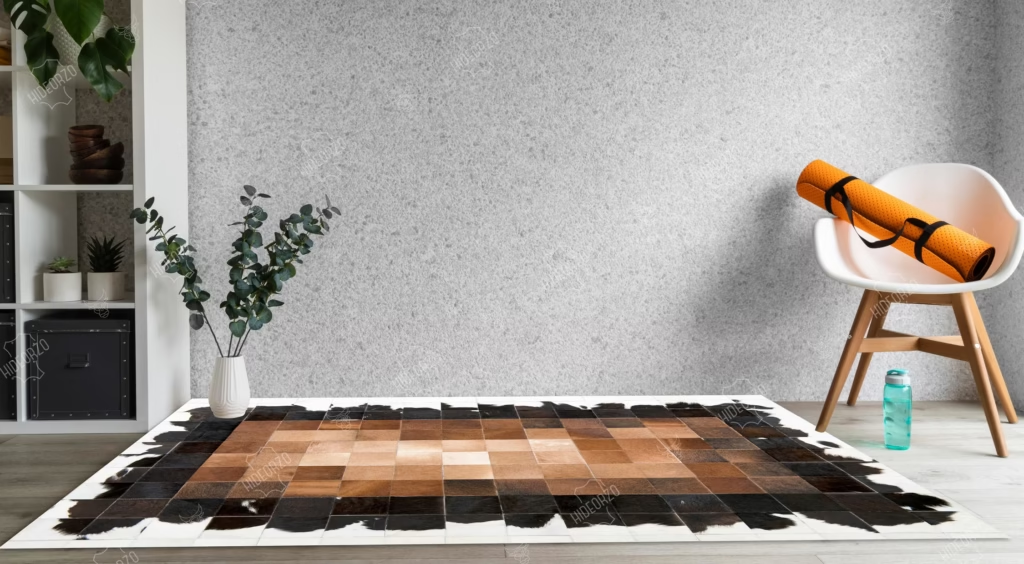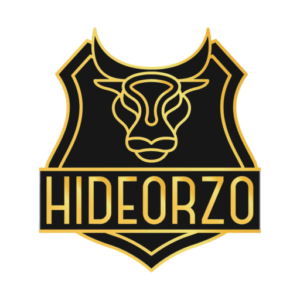At Hideorzo, we are committed to revolutionizing the leather industry with a focus on sustainability, particularly in the design of cowhide hair-on leather products. Our innovative leather design framework has emerged from insightful co-creation workshops involving key stakeholders from the leather supply chain and related fields. This comprehensive approach addresses the intricate and dynamic nature of sustainable design, guiding us in our mission to create products that are both aesthetically pleasing and environmentally responsible.
The Structure of Our Framework
Our framework is visually represented in a two-axis. The vertical axis outlines essential aspects of the design process, while the horizontal axis presents three strategic approaches aimed at fostering sustainable development. While some boundaries between these aspects may blur, they represent critical considerations that designers must address when developing a product or service. At the intersections of these axes, we identify specific design methods and techniques that align with our sustainability objectives.
Key Design Aspects of Leather Design Framework: A Deeper Dive
To navigate the complexities of designing outstanding leather products, we focus following essential aspects in our leather design framework, each simplifying the intricate process of creation:

Technical Features
At the heart of our leather design philosophy are the technical features, which encompass the functional elements and properties of a product or service system. These include how materials are joined, the specific properties of those materials, and the technologies employed. For example, while stitching enhances the visual appeal of a leather item, it’s crucial to understand the functional implications of this decision: the type of sewing machine required, the thickness of the yarn and leather, and the ease of disassembly for repairs. By prioritizing these technical elements, we ensure that our products not only look good but also function effectively and can be maintained over time.
Conceptual Features
Moving beyond mere functionality, conceptual features of leather design framework embody the underlying ideas and intentions behind each product design. This dimension encourages us to think creatively about how a product can tell a story or evoke emotions. For instance, a wallet might be designed to embrace the natural aging process of leather, showcasing its character through scratches and wear. This approach fosters a unique emotional connection with users, transforming the product into a cherished item rather than just a disposable accessory. By establishing a strong conceptual foundation, we guide our technical and aesthetic decisions to align with the broader vision of each product.
Formal-Aesthetic Features
Aesthetics are integral to the user experience, and at Hideorzo, we pay close attention to formal-aesthetic features. These include the visual and tactile qualities of a product, such as color, shape, proportion, and texture. The formal-aesthetic quality of a leather item influences how it is perceived and experienced by users. For example, the weight of a product, its surface texture, and even its scent all contribute to a multi-sensory experience. By carefully crafting these aesthetic elements, we aim to create products that are not only functional but also visually stunning and emotionally engaging.

Material Selection
The choice of materials is a cornerstone of our leather design process. At Hideorzo, we meticulously evaluate the types of leather and supportive materials used in our products. This involves not only selecting high-quality materials but also ensuring their sustainability. We prioritize options that are free from toxic chemicals and consider factors like durability, reparability, and recyclability. Our commitment to traceability allows us to ensure that every material we use aligns with our sustainability goals, impacting not only the environmental footprint of our products but also their overall quality.
Design for Longevity
One of our core principles in leather design framework is to extend the lifecycle of our products. By focusing on durability, reparability, and versatility, we aim to minimize resource consumption and reduce waste. A product designed for longevity not only benefits the environment by decreasing the frequency of replacement but also enhances customer satisfaction by providing lasting value. Our goal is to create items that resonate with consumers, encouraging them to invest in quality over quantity.
Design for Recyclability
We believe that leather designing for recyclability is essential for a sustainable future. This strategy emphasizes creating products and systems that facilitate secondhand use and material recycling. At Hideorzo, we ensure that the materials we use are free from harmful substances, making them safer for the environment and easier to repurpose. By prioritizing recyclability, we contribute to a circular economy where materials can be reused and repurposed, reducing overall waste.
Design for Risk Management (Health & Environment)
This aspect of our leather design framework addresses the complexities of health and environmental safety. Our risk management strategy focuses on enhancing safety for both people and the planet throughout a product’s lifecycle. We rigorously evaluate the chemicals used in production, ensuring they are safe and traceable. By prioritizing the well-being of our customers and the environment, we aim to foster trust and transparency in our processes.

Bringing It All Together
At Hideorzo, our design teams navigate these aspects of the design process to develop innovative ideas and implement effective strategies. By integrating technical, conceptual, aesthetic, and sustainable considerations, we strive to create exceptional leather products that not only meet the needs of our customers but also contribute positively to the world. Our commitment to sustainability is not just a trend; it’s a fundamental part of our identity and mission.
Through this comprehensive framework, we aim to lead the charge toward a more sustainable future in leather design, one product at a time. Join us on this journey as we explore the endless possibilities that sustainable design can offer.

 Get exclusive updates on the collection's launch, personalized communication and the House's latest news.
Get exclusive updates on the collection's launch, personalized communication and the House's latest news.